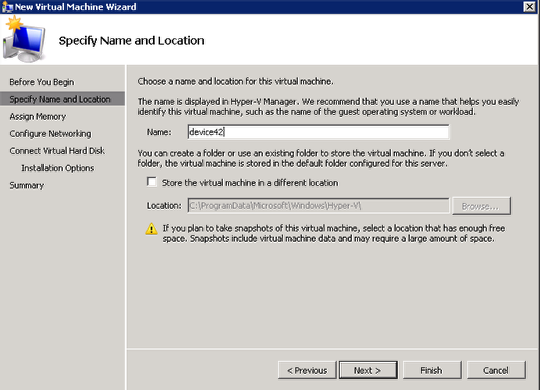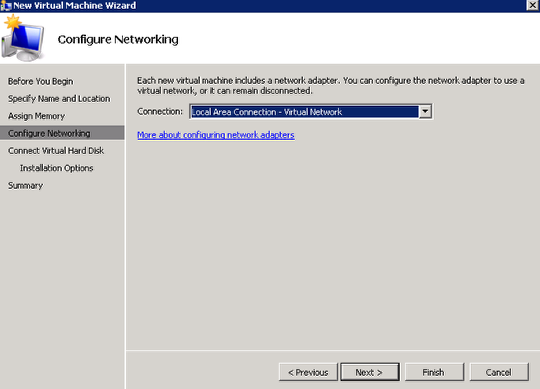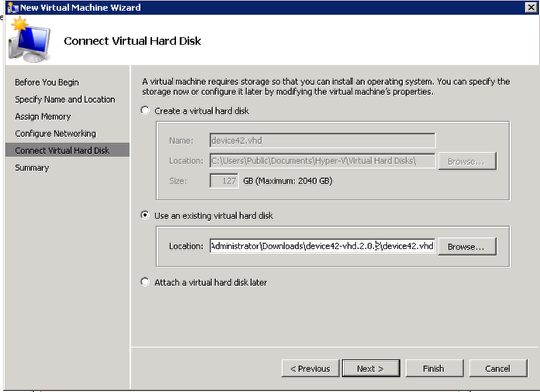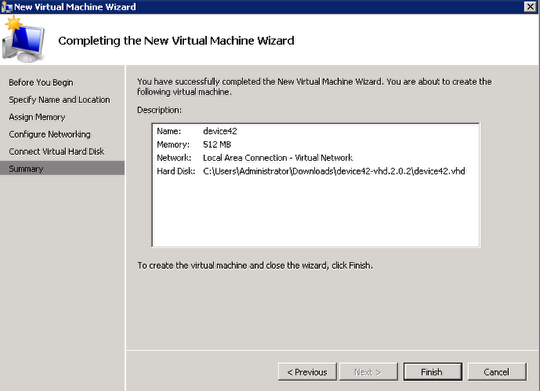Microsoft HyperV - Installation
This guide walks you through installing Device42 on a Microsoft Hyper-V virtual machine (VM).
Outline of Installation Steps
After you download the Device42 virtual appliance file, take the following steps to set it up:
- Use 7-Zip to unzip the downloaded file.
- Create a virtual machine with a minimum of 2 vCPU, 8 GB RAM for production use, and one network card. Configure the new VM to use the attached virtual disk file.
- Power on the new machine and log in to the console using the default credentials, then update the credentials.
- On the console, configure the IP and choose your settings. Please use a static (non-DHCP) IP address for all Device42-related appliances. Create a DNS entry that points to the IP address of the new virtual appliance.
- Point your browser to
https://FQDN (Fully Qualified Domain Name) or IP addressand log in to the web interface using the default credentials. Update the login credentials here as well.
You are now ready to start discovering and documenting your IT infrastructure!
Illustration of Installation Steps
Follow these steps to install Device42:
Download the Device42 VM Image
Download the compressed Device42 virtual appliance and use 7-Zip to unzip the file.
Create a New Microsoft VM
Create a VM with a minimum of 2 vCPU, 8 GB RAM, and 1 network card, and configure the new VM to use the attached virtual disk file. See the Sizing Recommendations for more details.
Only Hyper-V Gen1 VMs are currently supported. In our experience, users have issues deploying Linux VMs as Generation 2 in Hyper-V. We recommend deploying Device42 only as a Gen1 VM.


Configure the VM Networking

Attach the Virtual Disk File


Boot the VM and Log In to the Console
Power on the new machine and log in to the console using the default credentials:
- Username:
device42 - Password:
adm!nd42
Please change these credentials as soon as you've logged in.
Configure a Static IP and Networking Options
Configure an IP address for the Device42 appliance. Use a static IP or a DHCP address reservation. Ensure that DNS entries are created for every appliance to be used in a production setting. DNS server configuration is a necessary step.


Change the default password for the user device42 from the console menu before proceeding.
You can apply updates and perform other menu-related work using SSH port 404. Please note that root login has been disabled via SSH. Attempting to access the root will cause the VM to disable itself permanently and is not supported.
Log In to the Web Interface
Point your browser to the address at the top of the console menu or your newly created DNS entry at https://FQDN (Fully Qualified Domain Name) or IP address.
Log in to the web interface using the default credentials:
- Username:
admin - Password:
adm!nd42
Please change these credentials as soon as you've logged in.
You are now ready to start discovering your IT infrastructure!


Next Steps
Install the Device42 Remote Collector and Windows Discovery Service before creating your first discovery job.
You can import data into Device42 using the Device42 API or the Import/Export (xls) tool.